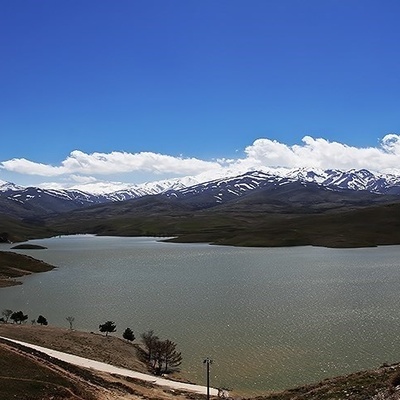SAEDNEWS: In the rugged hills outside Kermanshah, a city nestled in western Iran, an unlikely treasure lies buried beneath layers of stench and decay.

Dubbed unflatteringly as "dirty gold", there lies a mountain of trash accumulating under the relentless sun, its pungent odor blanketing the area.
But beneath the foul pong lies an economic opportunity of significant magnitude, symbolizing a new chapter in Iran’s approach to waste management, industrial fuel consumption, and environmental sustainability, according to Press TV.
The story begins in the year 2000, when Kermanshah inaugurated what would become Iran’s most pioneering and advanced waste recycling facility. It was a bold experiment at the time, an attempt to generate value from what was once seen purely as refuse.
Since then, the facility has grown to process 650 to 700 tonnes of municipal waste each day, pulling from the heaps of garbage an energy-rich fuel known as refuse-derived fuel, or RDF.
This compressed, combustible material is created from non-recyclable waste such as plastic bags, textiles and soiled paper, promising a radical shift away from the fossil fuels that have long powered Iran’s industries.
For years, Iran’s cement factories and other heavy industries have relied heavily on fossil fuels, especially mazut - a thick, polluting oil derivative.
Now, the West Cement Industries Company in Kermanshah has become the country’s first site to partially substitute its natural gas consumption with RDF.
About 120 tonnes of RDF are delivered daily, replacing roughly 19% of the plant’s natural gas use, an early but powerful step toward cleaner energy alternatives.
To grasp the scale of this achievement, Kermanshah province generates approximately 1,400 to 1,500 tonnes of waste each day, over half of which comes from the city itself.
Nationally, Iran produces nearly 60,000 tonnes of waste daily, amounting to about 20 million tonnes annually—more than twice the per capita waste of many countries. Despite this abundance of raw material, recycling rates hover at a mere 5 to 10 percent.
Experts estimate that properly sorting and recycling six million tonnes of waste annually could unlock some $3.5 billion in value.
When factoring in downstream manufacturing of recycled materials, the figure balloons to $10 billion, illustrating the immense economic returns available from investing in waste management systems.
The economic advantages extend beyond direct value addition. Waste recycling creates a broad spectrum of employment opportunities, from collection and sorting to processing and manufacturing.
In many countries, waste management and recycling have become significant sources of formal and informal jobs, contributing to social inclusion and poverty alleviation.
By following suit, Iran could similarly harness the sector’s labor-intensive nature to generate employment, particularly among youth, thereby addressing both economic and social policy objectives.
The environmental stakes are equally high. Unchecked waste accumulation releases methane—a greenhouse gas far more potent than carbon dioxide—into the atmosphere.
Landfills and open dumps contaminate soil and groundwater, while their expansion encroaches on precious land resources. Diverting waste from these sites through recycling and RDF production can dramatically reduce these harmful effects.
Additionally, reducing reliance on mazut and other fossil fuels cuts carbon emissions, helping Iran meet its climate commitments amid growing international pressure.
Iran’s government is taking note. Officials, including Interior Minister Eskandar Momeni who visited Kermanshah last week, have highlighted the vast potential of RDF.

